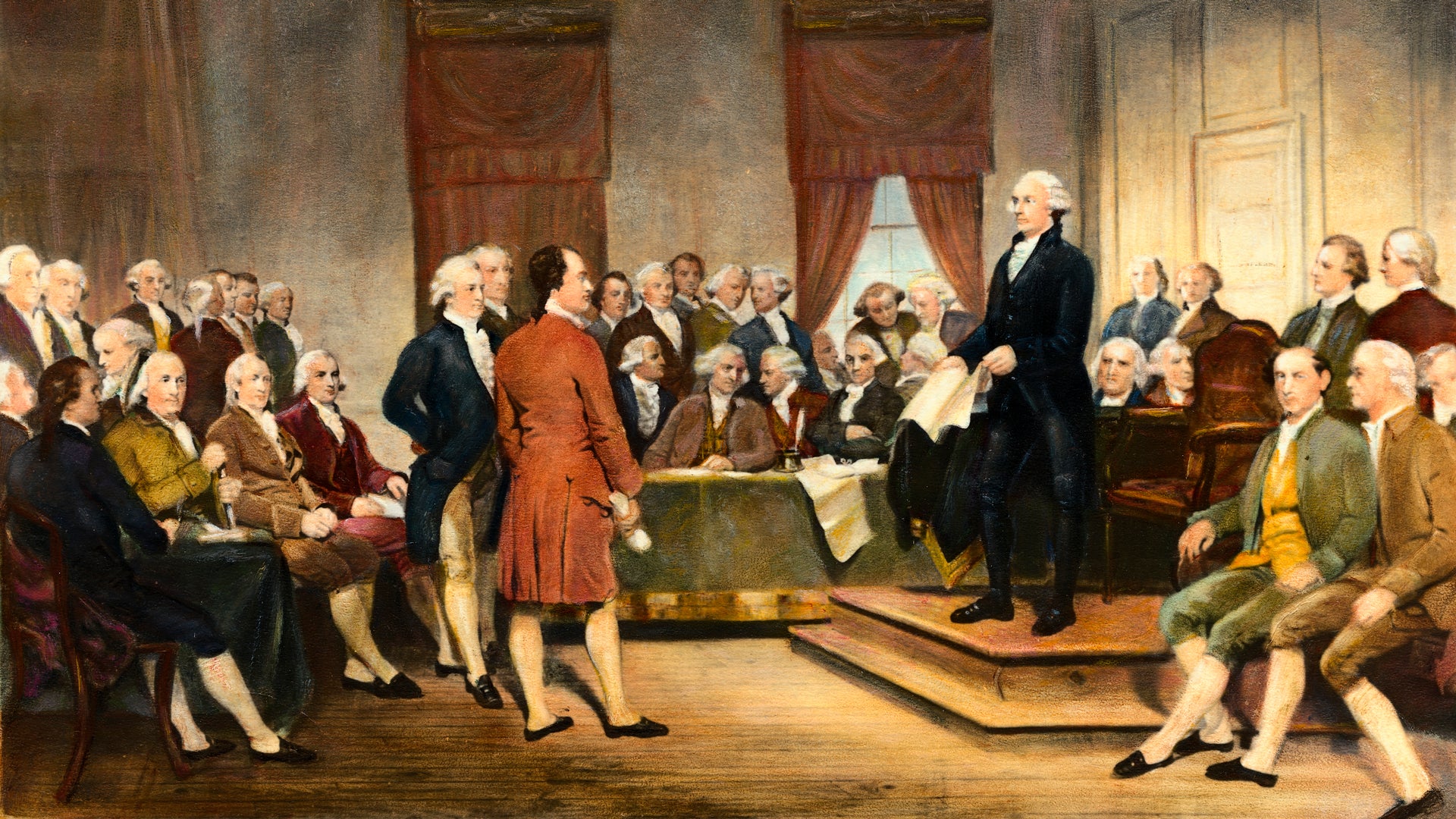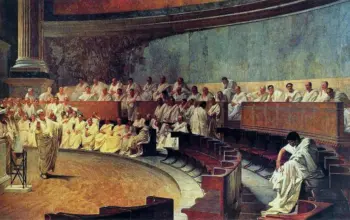Uzone.id – As far as the nature of constitutions is concerned, all are almost identical. A constitution defines the framework of a country’s legal system and it also defines the rights of its citizens. Most of the countries’ constitutions were developed several hundreds of years ago, though they have been revised from time to time.
Below are the 10 oldest constitutions in the world that have been continually in force though with various modifications in the form of revisions or amendments.
Canadian Constitution
- Passed: July 1, 1867
- Last Modified: 1982
- Author: Canadian Confederation
- Type of Government: Government: Federal Parliamentary Constitutional Monarchy
In the interview with a participant called The Oldest, he stated that the Canadian Constitution is based on the document signed in 1867 called the British North America Act. This year is also Canada when four colonies in the British Empire of North America united to create one governing body, one samostatný that is – governors of Britain in North America.
Nevertheless, Canada is a fully independent country, but to the present day, it is a member of the British Commonwealth.
The Canadian Constitution provides information as to the organization of the Canadian Government such as the parliament, the process of elections, the status of the monarch, and the centralization and decentralization of powers between the federal government and the provinces.
It was amended the last time in 1982 and consists of a rather voluminous part called the Canadian Charter of Rights and Freedoms, which indicates the civil rights of each citizen of Canada.
The 1982 law also outlines how constitutional law is changed, and this forms part of this paper’s discussions. Since the Canadian constitution reforms in the 1980s and 1990s, the subject of the establishment of the constitution has become a politically sensitive matter.
Constitutional Act of the Kingdom of Denmark.
- Passed: June 5, 1849
- Last Modified: June the fifth, nineteen fifty-three.
- Author: D. G. Monrad and Orla Lehmann.
- Type of Government: Parliamentary constitutional monarchy in which the United Kingdom is governed by one national government.
The Kingdom of Denmark is formally a monarchy but it also has a democratic setup as well. As a constitutional monarchy, the king’s powers are circumscribed by the Constitution of the Kingdom of Denmark which was adopted in 1849.
Constitutional Law is the highest in Denmark and it is paramount to all other laws in the country. The Constitutional Law was last amended on June 5, 1952, The Constitutional Law was last amended on June 5, 1952.
The original statute of the year 1849 contained one hundred sections, but later it was limited to ninety sections and distributed in eleven chapters.
The Constitutional Law not only defines the subject, powers, and role of the Danish democracy but also the rights and responsibilities of every individual such as; the right to speak and write freely, the right to freedom of religion, the mandatory right to bear arms.
Denmark changed from an absolute monarchial kind of government to a constitutional monarchial one after King Christian VIII having realized his power was too absolute before his death demanded his son Frederik VII ensure the Danish people were given a new constitution that would grant the people freedom, equality, and ensure no anyone will be allowed arbitrary power.
Swiss Federal Constitution
- Confirmed: September 12, 1848
- Last Modified: Wednesday 8/5/14
- Author: Federal Assembly
- Type of Government: Semi-direct democracy at the federal level in a Republic of independent directors comprising a multi-party legislature
Switzerland has enjoyed its current political system since the adoption of the Swiss Federal Constitution on the 12th of September, 1848 which led to the establishment of the Swiss Federal State.
The constitution of Switzerland borrowed very many ideas from the United States Constitution and also from the French Revolution principles.
To write the Swiss Federal Constitution, the Federal Assembly was established; a legislative body comprised of the National Council and the State Council.
In addition, the Swiss Federal Constitution provides its citizens with a declaration of fundamental rights of the individual, the federal government, and the federal courts. The 1848 constitution was then rewritten in 1874.
The modern Swiss Federal Constitution was ratified on April 18, 1999, and directly replaced the Constitution of 1874. The Swiss Federal Constitution established Bern (Berne) as the capital of Switzerland.

Luxembourg Constitution
- Date of Ratification: October 12, 1841
- Last Modified: October 18, 2016
- Author: William II
- Type of Government: Unitary parliamentary constitutional monarchy
The Luxembourg Constitution was first written in 1841, just two years after Luxembourg became a sovereign country. The current constitution was created in 1868 and last amended in 2016.
The Luxembourg Constitution consists of 121 articles, divided into 13 chapters. Similar to other constitutions, the Luxembourg Constitution explains the foundations of the state and guarantees the rights and freedoms of citizens and the organization of power.
Although the Luxembourg Constitution has been revised several times since 1841, one of the biggest changes occurred in 1919. After the revision of the Constitution, all citizens of legal age, who were then 21 years old (reduced to 18 years in 1972), were given the right to choose.
Previously, only men aged 25 and over who paid a certain amount of tax could vote. According to Luxembourg’s official website, its Parliament is currently in the process of overhauling, or updating it to reflect modern democracy.
Constitution of Belgium
- Date Ratified: February 7, 1831
- Last Modified: 1993
- Author: National Congress
- Type of Government: Federal Parliamentary Constitutional Monarchy
The Belgian Constitution was approved on 7 February 1831 after the National Congress had first convened in November of the previous year to begin discussions regarding the formation of a new government.
Although the Belgian Constitution is an original document, it was inspired by the French constitutions of 1791, 1814, and 1830, the Dutch constitution of 1814, and British constitutional law.
Since 1831, Belgium has been a parliamentary monarchy with three levels of government: legislative, executive, and judiciary. In addition to establishing the country’s laws and government, the Belgian Constitution provides rights and freedoms to its citizens.
According to the Constitution, all Belgian citizens have equal standing before the law and no citizen can be deprived of their freedom in any way, except by order of a court.
To prevent government corruption, anyone wishing to run for the Belgian Senate is required to pay a large amount of taxes and be at least 40 years old.
Constitution of the Kingdom of the Netherlands
- Date Ratified: Sources vary; circa 1814/1815
- Last Modified: 1983
- Author: Commission led by Gijsbert Karel van Hogendorp and William I of the Netherlands
- Type of Government: Semi-federal parliamentary constitutional monarchy
The Constitution of the Kingdom of the Netherlands was established around 1814 or 1815 and has been amended several times. The first major revision occurred in 1848 and established a system of parliamentary democracy.
The current version of the Dutch Constitution was created in 1983. Like other constitutions, the Constitution of the Kingdom of the Netherlands combines the rules of the Dutch system of government and the basic rights of citizens.
Some of the rights outlined in the Dutch Constitution include freedom of expression; right to privacy; the right to vote and stand for election; and the right to equal treatment.
The Constitution of the Kingdom of the Netherlands is only the second most important document in the country. It is subject to the Charter of the Kingdom of the Netherlands, which regulates the constitutional relations between the various states that make up the Kingdom (the Netherlands, Curaçao, St Maarten, and Aruba).
Constitution of Norway
- Date Ratified: May 17, 1814
- Last Modified: May 13, 2014
- Author: Norwegian Constituent Assembly
- Type of Government: Unitary parliamentary constitutional monarchy
The Norwegian Constitution or Kongeriget Norges Grundlov was adopted on 17 May 1814 and is one of the oldest constitutions in the world. Similar to the US Constitution, the Norwegian Constitution is based on the principles of popular sovereignty; separation of powers; and human rights.
The Norwegian Constitution also establishes three distinct branches of government: Legislative, budgetary, and supervisory powers rest with the Storting; Executive power is vested in the King and Council; and Judicial power is vested in the Supreme Court, subordinate courts, and the Impeachment Court.
From its inception, the Norwegian Constitution recognized the fundamental human rights that the country has striven to uphold. Norwegians are one of the happiest and most prosperous people in the world.
Although the Norwegian Constitution has always addressed human rights, on 13 May 2014, a series of articles on human rights were added to the Constitution.
Constitution of the Republic of Poland
- Date Ratified: May 3, 1791
- Last Modified: October 21, 2009
- Author: Historis – Ignacy Potocki, Hugo Kołłątaj, Raja Stanisław August Poniatowski, Stanisław Małachowski, Stanisław Staszic, dan Scipione Piattoli; Modern – Constitutional Committee of the National Assembly
- Type of Government: Unitary semi-presidential constitutional republic
Although the Constitution of San Marino is technically older, it is generally considered the second oldest modern constitution in the world and the oldest in Europe.
The Constitution of 1791 aimed to establish a more effective constitutional monarchy, one that had a clear division of executive, legislative, and judicial powers. Later constitutions took inspiration from ideas in the Constitution of May 3, 1791.
Poland’s modern constitution was enacted in 1997 and last amended in 2009. Although the Polish Constitution of 3 May 1791 is historically important to the country – May 3 is a Polish national holiday and feast day – it was only valid for one year due to the Russian War -Poland in 1792.
United States Constitution
- Date Ratified: June 21, 1788
- Last Modified: May 5, 1992
- Author: Constitutional Convention
- Type of Government: Federal presidential constitutional republic
Although the San Marino Constitution is nearly 200 years old, the United States Constitution is often considered the oldest constitution in the world because not all of the San Marino Constitution was codified.
Additionally, the United States Constitution was the first permanent constitution and influenced the constitutions of several other countries.
The United States Constitution was ratified on June 21, 1788, after nine of the original 13 states signed it. The constitution came into force the following March and a new government was formed.
Since then, the United States Constitution has been amended 27 times, with the first ten amendments collectively known as the Bill of Rights.
Many of the founding fathers of the United States did not sign the Constitution, including Thomas Jefferson, John Adams, Samuel Adams, Patrick Henry, and John Hancock.
Constitution of San Marino
- Date Ratified: October 8, 1600
- Last Modified: 2002
- Author: Camillo Bonelli
- Type of Government: Unitary parliamentary hierarchical republic
The Constitution of San Marino dates back to 1600 and has been in continuous use ever since, making it the oldest constitution in the world. However, the country’s Constitution is not codified, meaning that not all elements of it are laws (this is why the United States Constitution is often cited as the oldest).
San Marino’s current legal system is still based on the Constitution of 1600, so it is considered the oldest existing constitution in the world. The Constitution of San Marino or Statuta Decreta ac Ordinamenta Illustris Reipublicae ac Perpetuae Libertatis Terrae Sancti Marini, was written in Latin and contained in six books.
It was last changed in 2002 when the 1974 Declaration of the Rights of Citizens was updated.





